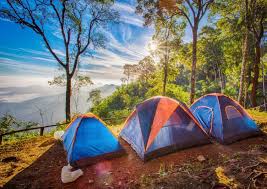Imagine a beautiful scenic spot that Aussies love. It could be anywhere, like the Australian national parks to the beaches. Most of these places are permitted free camping spots. Now imagine setting up a tent here.
The first step towards pitching a tent is finding the right spot to do it. The tent may not stay quite as well as one would expect if the ground it is on is not suitable. The tent should be securely attached to the ground with screw-in ground anchors once one finds the right spot.
Who wouldn’t love to go on a picnic and make tents? It is a fun exercise to bond with your loved ones and a memorable experience since one doesn’t always get to live amidst nature these days. This adventure is not accessible within the four walls of a home.
So to find the ideal spot for tenting, pay attention to the following pointers:
-
Find a Flat Spot
It is best to pitch a tent in a flat spot near the campsite. Remove all objects like rocks, branches, and other twigs from the place. Do not set up tents in shallow areas. Do not select a lower spot than the surrounding areas; if it rains, trenched grounds can quickly fill up with water. Even if the tent is waterproof, it will be a difficult situation to manage. The ideal ground would be raised-up and flat.
-
Consider the Direction of the Wind
The tent should always face away from the wind. Or the doors must be facing the opposite side of the prevailing wind direction since the wind can create tension and loosen the stakes. It could also cause the tent to balloon up, increasing the tent’s chances of surrendering to wind pressure.
Screw-in ground anchors are handy during such situations as they firmly secure the stakes to the ground. They can be inserted into the ground using any regular drills.
The natural treeline can be useful to create a windbreak. If it is windy, pitch the tent closer to the trees, so they act as a barrier against the wind. Avoid tenting in riverbeds due to the risk of flash flooding. And tents should not be placed directly under trees because the branches could fall on them without warning.
-
Position of the Sun
Try to find out where the sunrise will be and put up your tent accordingly so that the morning sun would not wake you up the next morning. During summers, tents can behave like literal ovens if they are placed directly in the path of the sun. One can wake up sweating and irritable in such events. So for a comfortable stay, choose the shady side and wake up whenever it feels right.
-
Organize
The campsite has to be organized adequately. This aspect includes decisions like keeping the cooking and toilet areas upwind. If there is a fire, ensure that it is lit at a safe distance from the tent so that no sparks come into contact with it. Remember to properly put out the fire before going to bed, as many incidents involving forest fires have occurred due to careless travelers.
In addition to setting up the tent well, these steps also have to be given due regard. Because sometimes the foundation determines the integrity of the whole idea. Double-check after completing each process of setting up the tent. It is always better to be on the safer side no matter what people say.
